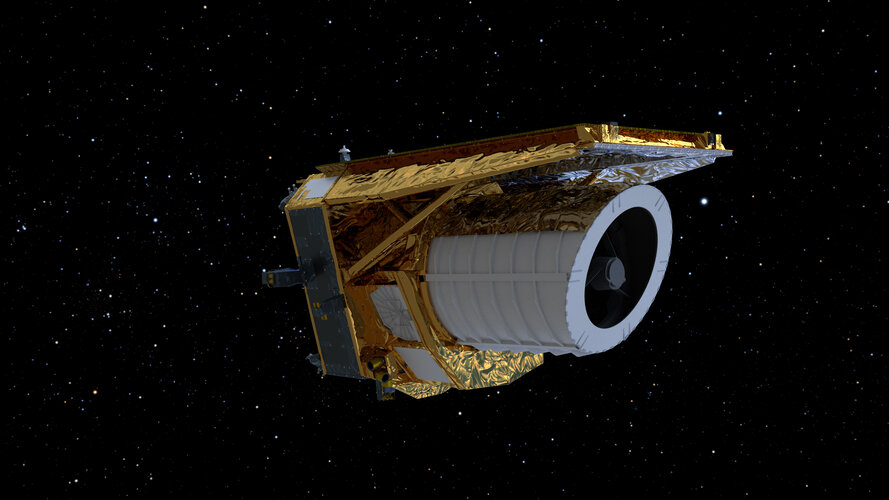Dark Universe detective sees more of the light

“It was midnight at ESOC mission control when we de-iced the first two mirrors in the procedure. We were very careful with our timings, ensuring we had constant contact between the spacecraft and our ground station in Malargüe, Argentina, so we could be ready to react in real time if there were any anomalies,” explains Micha Schmidt, Euclid Spacecraft Operations Manager.
“Thankfully, it all went as planned. When we saw the first analysis provided by the science experts, we knew that they would be very happy – the result was significantly better than expected."
Mischa Schirmer, calibration scientist for the Euclid Consortium and one of the main designers of the de-icing plan, explains the results.
"Our primary suspect, the coldest mirror behind the main telescope optics, was heated from -147°C to -113°C. It didn't need to get hot, because in a vacuum this temperature is enough to quickly evaporate all the ice. And it worked like a charm! Almost immediately, we were receiving 15% more light from the Universe. I was certain that we would see a considerable improvement, but not in such a spectacular way."
With Euclid's vision cleared at the very first stage of the procedure, scientists and engineers could tell where precisely the ice had formed, and where it is likely to form again. “Euclid's ‘eye’ has been cleared, allowing it to clearly see faint light from distant galaxies, and more of them than would otherwise be possible without this operation,” explains Reiko Nakajima, VIS instrument scientist.
“We expect ice to cloud the VIS instrument’s vision again in the future. But it will be simple to repeat this selective decontamination procedure every six to twelve months and with very little cost to science observations or the rest of the mission.”
After months of research from scientists and engineers across Europe, late nights at ESA's ESOC mission control and 100 minutes of targeted warmth, Euclid's vision has been protected. These studies, and incredible result, will also help future satellites likely to face the same, common icy problem.



